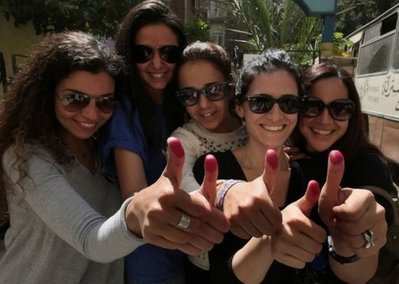The World Economic Forum has recently released The Global Gender Gap Index for 2011, and the global rankings are by no means a surprise. The Report, published annually since 2006, ranks approximately 135 countries based on their gender performance by benchmarking criteria such as economic participation and opportunity, political empowerment, educational attainment and health and survival. With a few country exceptions, the overall performance of different regions has been rather consistent. However, despite significant gender equality advancements over the last few years, the Middle East and North Africa (MENA) region continues to lag behind.
MENA Rankings and Trends
Occupying last place on the overall average score, the MENA region has closed 59% of its gender gap (compared to over 70% in North America and Europe and Central Asia). More specifically, it placed 5th in educational attainment and 4th in health and survival, ahead of sub Saharan Africa and Asia and the Pacific. The areas in which it falls behind the most are economic participation and opportunity and political empowerment.
The report summarizes the MENA region results by dividing them into groups based on the performance of individual countries. Based on the Report’s classification of MENA countries, the first group amongst the Arab nations is composed of the United Arab Emirates (UAE), Kuwait, Tunisia and Bahrain, and is characterized by higher performance in educational attainment and health and survival. The UAE shows the most improvement compared to 2010, while Kuwait shows a worsening gap in literacy rate. Next come Qatar, Mauritania, Jordan and Lebanon, a group which has also demonstrated strength in the education sector (specifically Qatar and Jordan). In health and survival, Lebanon is the only country achieving parity.
The third group contains Algeria, Egypt and Syria. Algeria’s relative decline in the ranks is due to a worsened perception of wage equality. Egypt, on the other hand, improved in this area, as well as in school enrolment gaps. The fourth and last group is comprised of the lowest-ranking MENA countries, namely Oman, Morocco, Saudi Arabia and Yemen. Despite its low performance, Saudi Arabia has shown the highest improvement over the past six years amongst the countries that have been included in the Index since 2006. Yemen continues to place last, not only amongst MENA countries, but also compared to all countries included in the report. Despite improvement in absolute terms, Yemen is the only country closing less than 50% of its gender gap.
The Puzzle
The results of this report are perplexing, not because the MENA region was expected to top the charts, but because the results do not seem to reflect the dramatic advancements that many of these countries have experienced in recent years, especially when compared to the rest of the developing world. MENA women have outperformed their counterparts in the developing world in life expectancy, literacy and infant mortality. They have taken up ministerial and other high positions in government, have contributed to the policy process as members of parliament and other consultative councils, and have participated considerably in the electoral process where it exists. Their performance in education has in many cases resulted in a “reverse gender gap” where women outnumber men, particularly in tertiary education. On the Trends in International Mathematics and Science Study (TIMSS),MENA girls have continued to outperform boys in all but one participating country. Most countries, particularly the Gulf Cooperation Council (GCC) members have invested enormous resources towards advancing women’s education in the last 10-15 years. Yet these investments have evidently not translated into closing the gender gap.
Like the rest of the world, MENA will need to address massive political disparities – a weak performance area for all countries worldwide. More immediately, the main challenge for MENA is achieving full integration of women into the economy in order to harvest the benefits of its investments, and in order to remedy its unemployment issues. MENA women often face legal and social pressures that place restrictions on the place -and in some instances time- of their work. They are particularly sidelined in industries such as construction, engineering and tourism. For a region that is booming in all three areas, the overwhelming exclusion of more or less 50% of the population contributes to large disparities in the economy.
Moreover, because MENA women are conventionally the primary caregivers to their children, they often end up being the ones in the family who endure professional sacrifices that inhibit their career potential. Thus, they are often perceived to be less attractive to employers, and are more likely to suffer from unemployment, hampered professional growth and limited choice and mobility.
Currently, none of the 135 countries covered in the Report have fully achieved gender equality, and it is obvious the world has a long way to go. In fact, only four countries have achieved scores in the 80-85% range (Iceland, Norway, Finland and Sweden). Overturning several thousand years of unrelenting male dominance is difficult for all countries and regions. But for the Middle East, it has been especially challenging.
Established in 1995, the Georgetown Public Policy Review is the McCourt School of Public Policy’s nonpartisan, graduate student-run publication. Our mission is to provide an outlet for innovative new thinkers and established policymakers to offer perspectives on the politics and policies that shape our nation and our world.

1 thought on “The Gender Equality Paradox in the Middle East and North Africa”
Comments are closed.